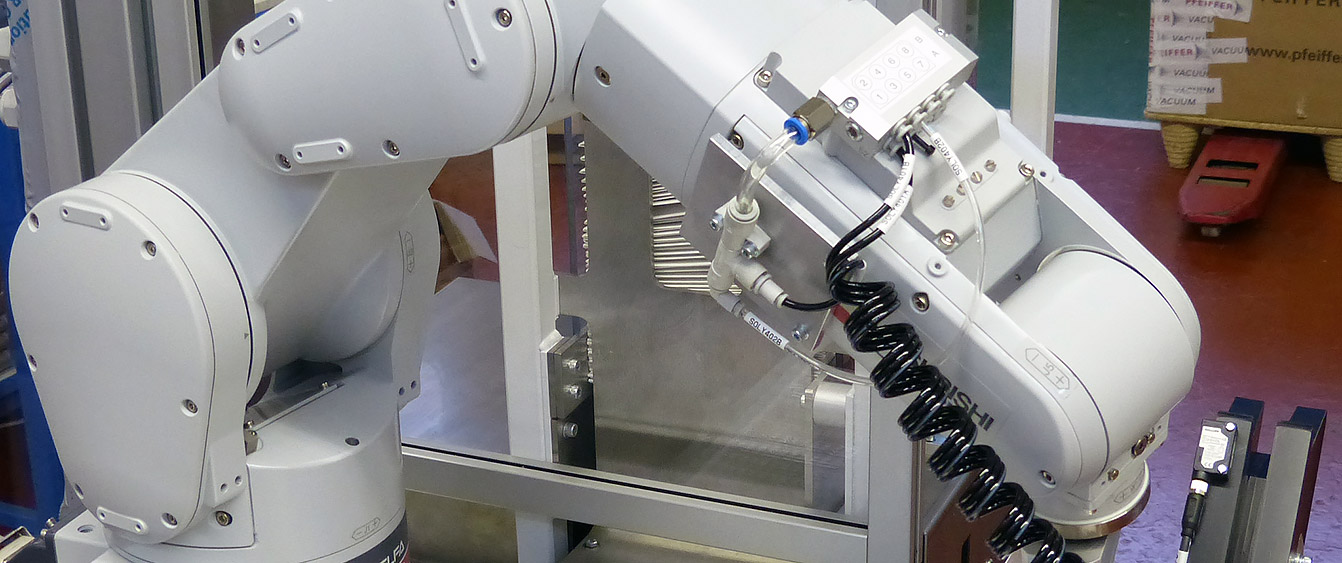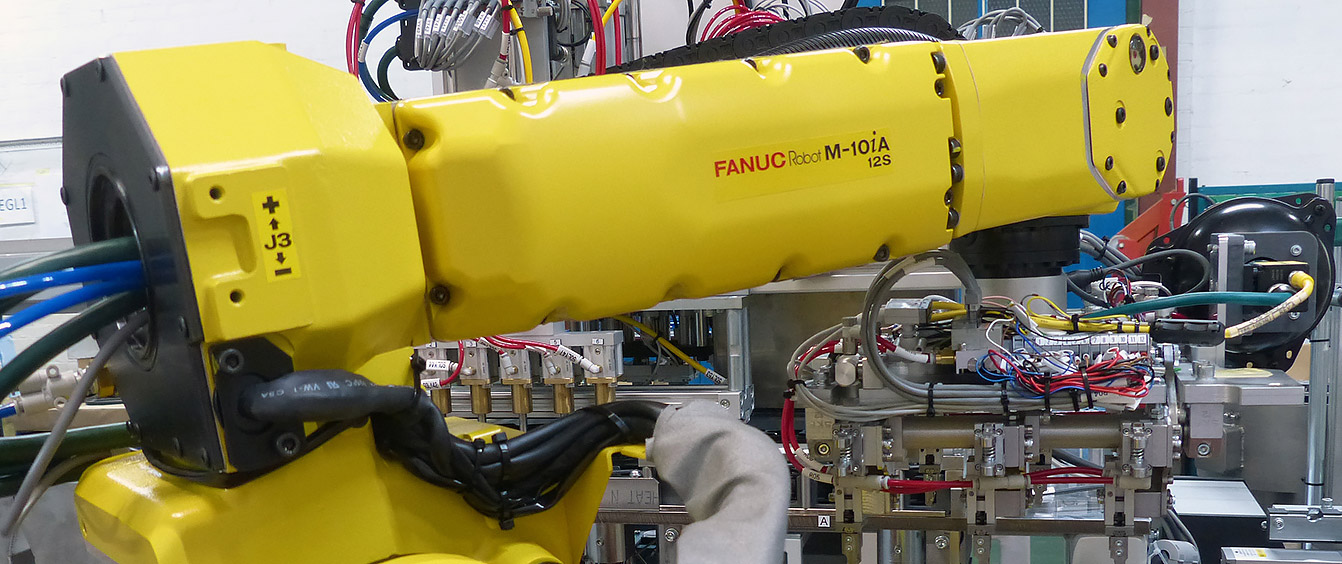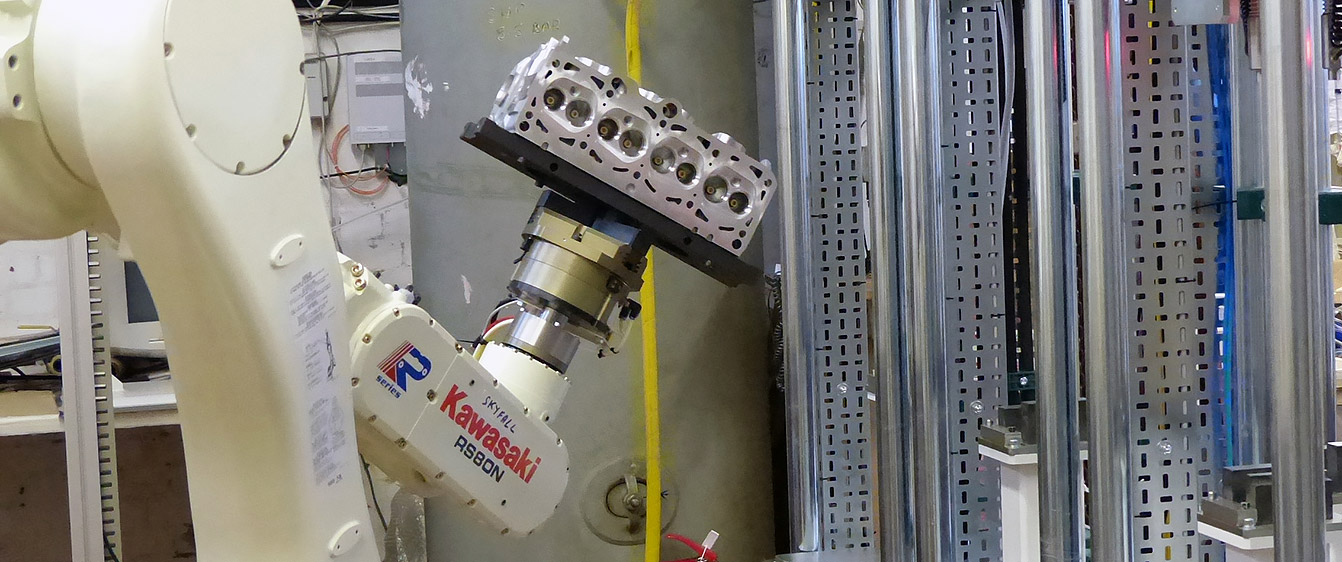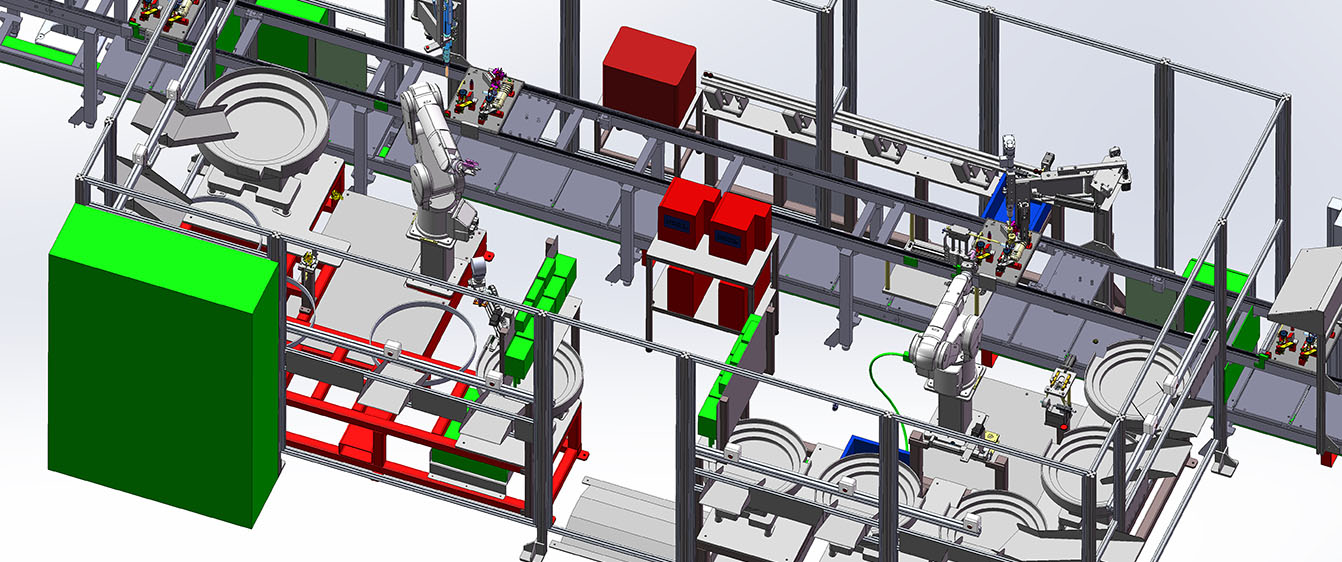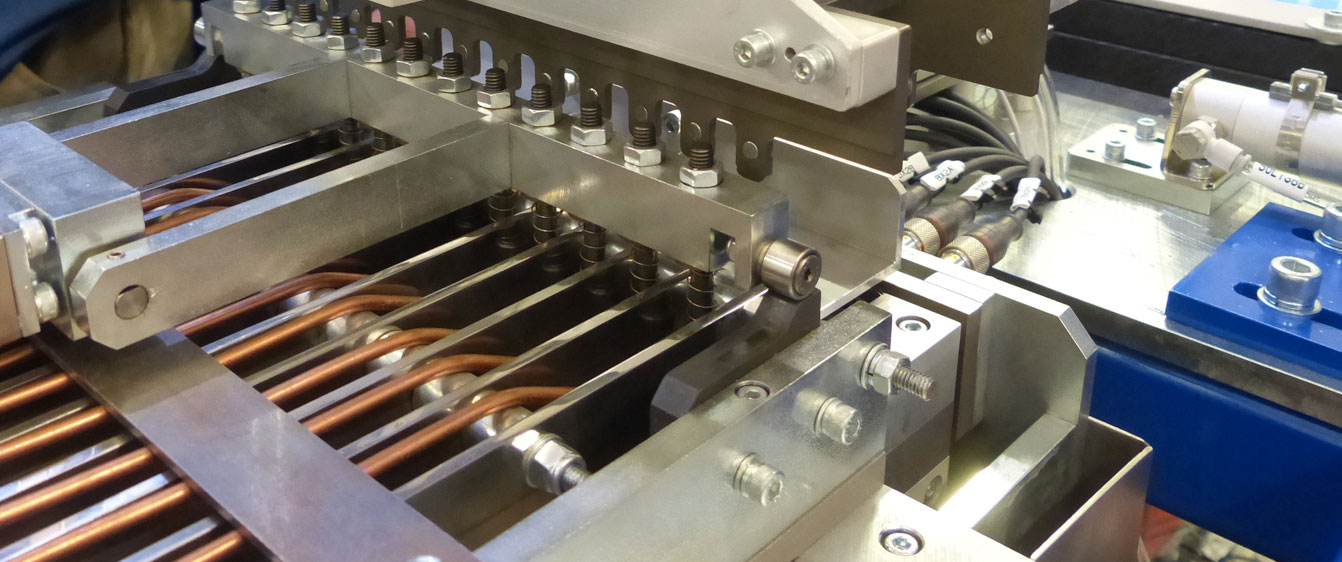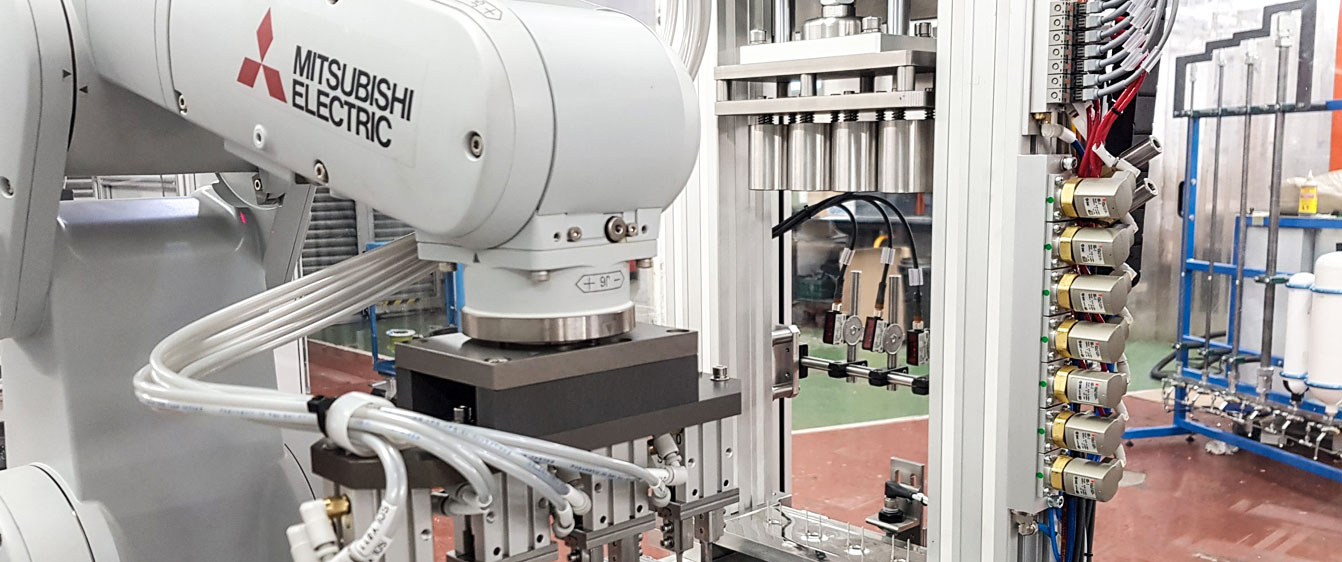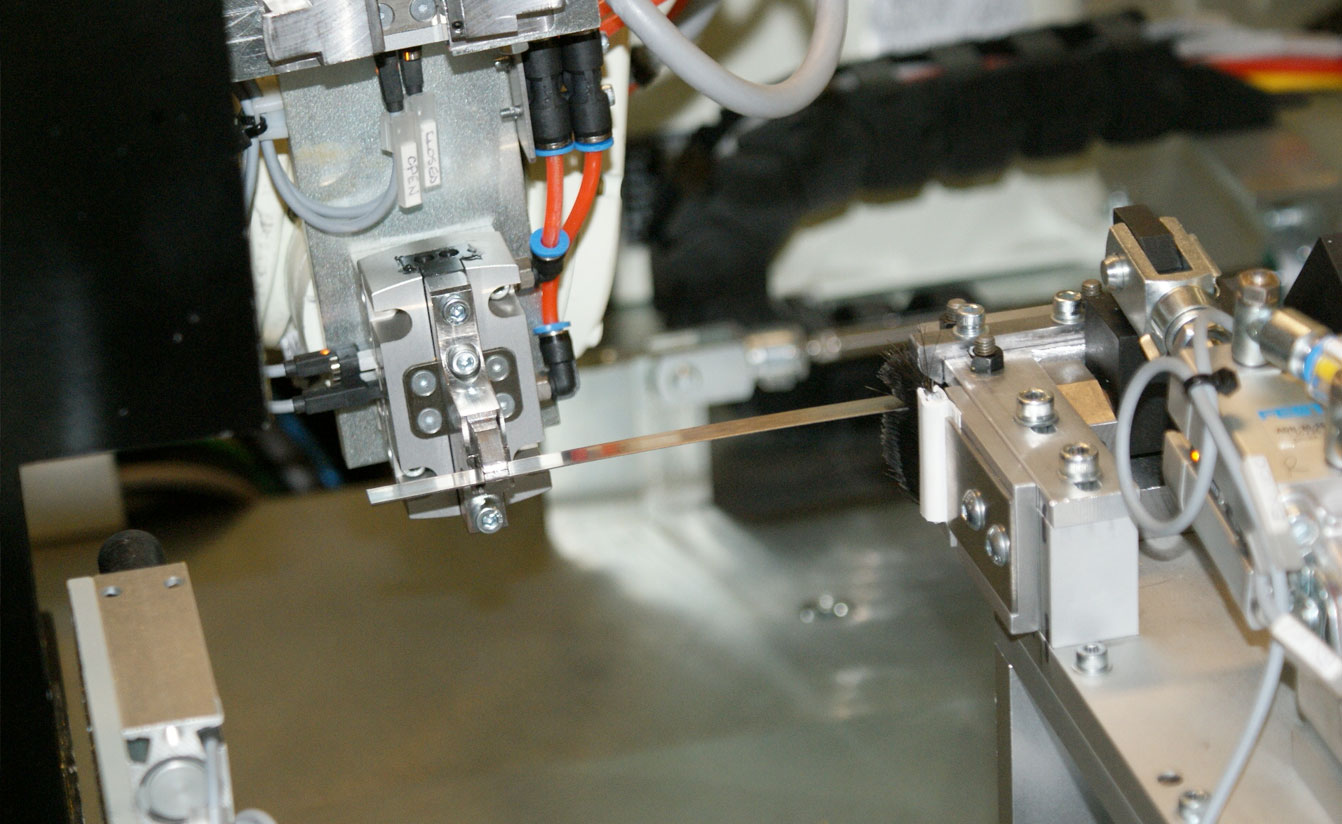TQC have produced a number of integrated robot and handling systems for several demanding applications to provide increased speed, quality, and flexibility. The projects have ranged from the use of proprietary robot units to the development of large, complex bespoke systems. Typical applications include using robots for flexible, reconfigurable and multi-variant systems engaged in automated assembly, automated testing, machine tending, press tending and parts transfer.
Categories of Robotic Systems:
- Multi-axis robots (6 or 7 axis)
- SCARA robots
- Delta or picker robots
- Cartesian gantry style units
- Pick and Place units
Robots can either handle production parts between sequential operations or for increased throughput can pick and place parts between technology modules such as parts feeders, markers, vision inspection, laser welding, adhesive or sealant dispensing.
TQC have provided multi-robot production lines and single robot workstations in different applications, ranging from automotive parts manufacture and modification, transfer of green state ceramic components, medical device production and test, to high precision automation at high speeds.
The system generally includes the robot mounted onto a frame and within a guard, an end effector, gripper or application head and its associated parts feeding systems. The system could also involve fixtures, jigs, small parts feeding, tray feeders, liquid (sealant or glue) dispensing, sophisticated vision, conveyors, boxes or cartons and bagging machines. Some systems also involve collaborative robots. This relatively new area of robotics combines either multiple robots working together or robots and operators working in close proximity with each other safely. TQC has experience in all of the areas mentioned above.
A robotic system is a flexible solution that can replace manual labour and reduce production running costs. “Lights Out” facilities are possible where no human interaction is required. Further benefits of integrated robot and handling systems include operations being quality assured and automatically checked. Quality assurance is critical within many production environments including the pharmaceutical and medical sectors, the automotive sectors and aerospace and defence industries.


